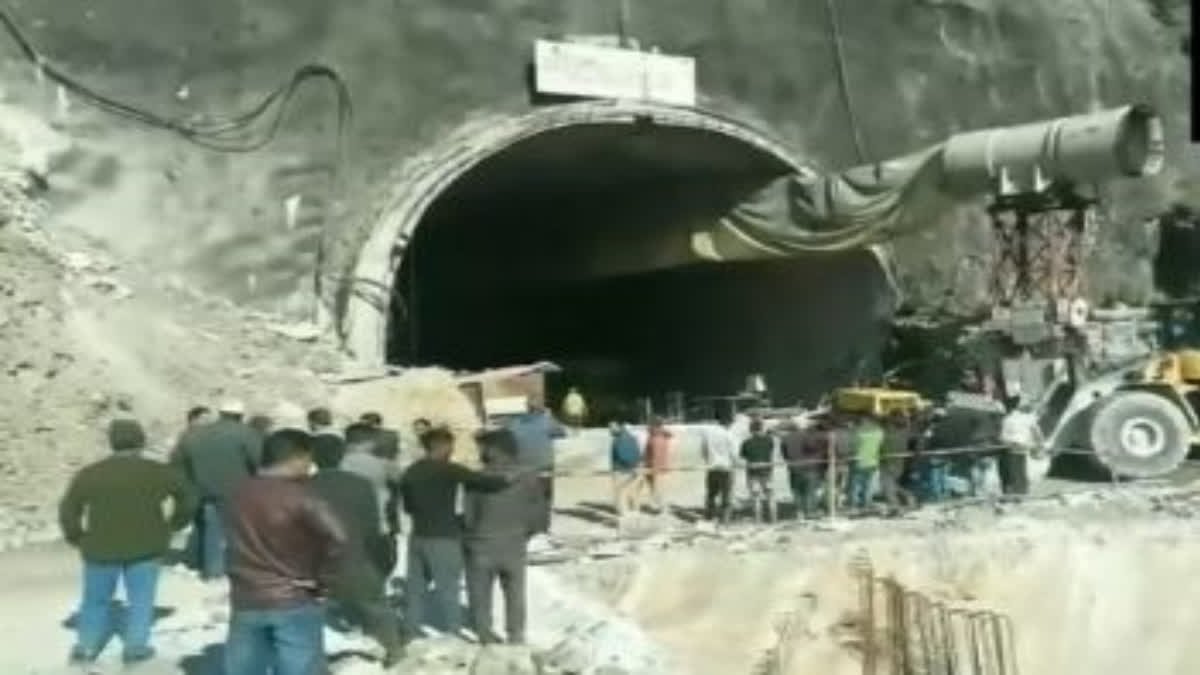Asansol: The Uttarkashi tunnel collapse has brought back the chilling memories of an almost similar incident which happened in the Mahavir mine in West Bengal's Raniganj a little over three decades back.
There is a queer similarity between the two incidents which are almost identical in nature. More than three decades have elapsed since the occurrence of the Raniganj incident which was made famous by the reel adaptation of the much-publicised incident, but its striking parallel with the Uttarkashi occurrence makes it a perfect case for discussion about the safety of mine workers across mines in the country.
On November 13, 1989, 64 miners were trapped at the Mahavir Mine in Rani Ganj. On November 12, at least 40 workers were trapped after a tunnel under construction on the North Kashmir National Highway collapsed. As many as 64 mine workers were rescued from the Mahavir mine in a nailbiting rescue mission. Anxiety gripped authorities after the Uttarkashi incident came to light on Saturday, a day before Diwali. It prompted Prime Minister Narendra Modi to call Uttarakhand Chief Minister Pushkar Singh Dhami to know the status of the rescue effort.
Looking back in 1989, night shift work was going on in the Mahavir mine of Rani Ganj. Workers working in mining sections 21 and 42. They were divided into 61 and 10 numbers respectively in two segments. Frighteningly enough, water entered through the tunnel while they were digging through blasting of dynamite. Walls of a British-era abandoned mine that lay close to the Mahavir mine stored water and collapsed resulting in the mishap.
As a result, about 11 lakh gallons of water gushed inside the Mahavir mine sweeping away six miners who were standing near the wall. Their dead bodies were recovered much later. Some mine workers were lucky to escape but 65 others got stuck inside the mine just like 40 workers were trapped inside the tunnel in Uttarakhand.
A daring rescue mission
The mine workers, who came out of the mine, shared horror tales inside the dungeon-like tunnel. After the incident, they took shelter at a high place inside the mine with water all around making them run for cover. Miners ran helter-skelter in the pitch dark inside the mine. They were not even able to see their fingers. The only silver lining for the stuck miners was a telephone line which helped them to contact authorities outside. The workers quickly shared their ordeal while they were still trapped in a dark chamber-like mine with almost no hope for survival.
A group of skilled surveyors of ICL, who were roped in, swung into action. On November 13, a borehole was dug. Through this, the voices of the workers were heard. Food and water were supplied. A special rescue team was brought from Dhanbad but the rescue team almost gave up, thinking about the improbable task at hand. Rescued from the water-filled mine even gave experts with proven track records frightening experience.
That's when engineer JS Gill arrived on the scene. He suggested making a special capsule to be inserted inside the soil so that workers can be rescued one by one. Similarly, the workers of ICL's Niamatpur workshop started making capsules from iron sheets on the night of November 14.
On November 15 night, the capsule arrived. Gill expressed his desire to go for the risky venture of going inside. Taking the capsules in his hand, he entered through the hole to rescue the workers in the dead of night. After some time, miners started coming overground one by one amid the cheers of others. Gradually, all 65 workers' lives were saved under a daring rescue mission almost unheard of in the context of the country.
Gill attained the status of a hero due to his meticulous planning and execution of the operation. Later, a Bollywood movie based on the epic rescue called 'Mission Raniganj' made a splash.



